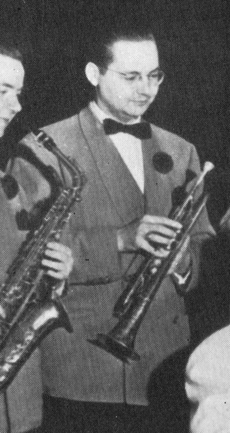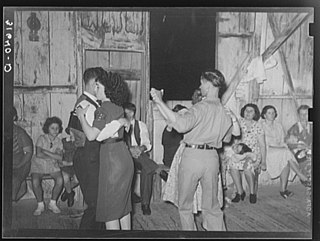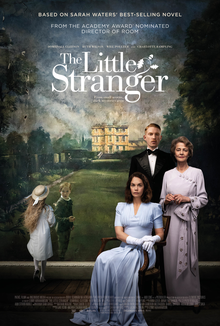
Stanislaus Pascal Franchot Tone was an American actor, producer, and director of stage, film and television. He was a leading man in the 1930s and early 1940s, and at the height of his career was known for his gentlemanly sophisticate roles, with supporting roles by the 1950s. His acting crossed many genres including pre-Code romantic leads to noir layered roles and World War I films. He appeared as a guest star in episodes of several golden age television series, including The Twilight Zone and The Alfred Hitchcock Hour while continuing to act and produce in the theater and movies throughout the 1960s.

Merle Oberon was a British actress who began her film career in British films as Anne Boleyn in The Private Life of Henry VIII (1933). After her success in The Scarlet Pimpernel (1934), she travelled to the United States to make films for Samuel Goldwyn. She was nominated for the Academy Award for Best Actress for her performance in The Dark Angel (1935). Oberon hid her mixed heritage out of fear of discrimination and the impact it would have had on her career.

Terence Fisher was a British film director best known for his work for Hammer Films.

Barbara Lee Payton was an American film actress best known for her stormy social life and battles with alcoholism and drug addiction. Her life has been the subject of several books, including her autobiography I Am Not Ashamed (1963). Also, Kiss Tomorrow Goodbye: The Barbara Payton Story (2007) by John O'Dowd, L.A. Despair: A Landscape of Crimes and Bad Times (2005) by John Gilmore and B Movie: A Play in Two Acts (2014) by Michael B. Druxman. She married five times.

Phantom Lady is a 1944 American film noir directed by Robert Siodmak and starring Franchot Tone, Ella Raines, and Alan Curtis. Based on the novel of the same name by Cornell Woolrich, it follows a young Manhattan secretary and her endeavors to prove that her boss did not murder his wife.

The Alligator People is a 1959 American CinemaScope science-fiction horror film directed by Roy Del Ruth. It stars Beverly Garland, Bruce Bennett, and Lon Chaney Jr. This film was the penultimate feature directed by Del Ruth, and quite different from those of his days at Warner Bros.

Joan Harrison was an English screenwriter and producer. She became the first female screenwriter to be nominated for the Best Original Screenplay Oscar when the category was introduced in 1940, and was the first screenwriter to receive two Academy Award nominations in the same year in separate categories, for co-writing the screenplay for the films Foreign Correspondent (1940) (original) and Rebecca (1940) (adapted), both directed by Alfred Hitchcock, with whom she had a long professional relationship.

Clyde Lanham Hurley, Jr. was a trumpeter during the big band era. He was born in Fort Worth, Texas to Clyde Lanham Hurley and Esther Brown. Scott Yanow describes Hurley as "a fine trumpeter with a fat tone and a hard-driving style". He died of a coronary occlusion in Fort Worth leaving two sons and a former wife.
Jay Dratler was an American screenwriter and novelist.

House of Dracula is a 1945 American horror film released and distributed by Universal Pictures. Directed by Erle C. Kenton, the film features several Universal Horror properties meeting as they had done in the 1944 film House of Frankenstein. The film is set at the castle home of Dr. Franz Edelmann, who is visited first by Count Dracula and later by Larry Talbot, the Wolf Man, who are trying to cure their vampirism and lycanthropy, respectively. Talbot is eventually cured, which leads him to discover the body of Frankenstein's monster in a cave below the base of the castle. Edelemann takes the monster's body back to his laboratory but finds Count Dracula has awakened and by attacking his assistants, he captures Edelmann and forces a reverse blood transfusion, which gives Edelmann a split personality and makes him a killer.

John J. Mescall, A.S.C. was an American cinematographer. He photographed such silent films as Ernst Lubitsch's The Student Prince in Old Heidelberg (1927), but he is best known for his work in the 1930s at Universal Pictures, where he often worked on the films of James Whale. Mescall was famous for his elaborate, some might say grandiose, effective camera movements, in which the camera would often track completely across or around a set, or even one performer. He did not always use these kinds of camera movements, but his most famous films all have them.

A fais do-do is a Cajun dance party; the term originated before World War II.

Killing Birds is a 1988 Italian horror film starring Lara Wendel and Robert Vaughn. The film is set in Louisiana where Fred Brown returns from the Vietnam war to find his wife in bed with her lover and slaughters the whole family sparing the newborn son. After the massacre, he is attacked by and blinded by a falcon. Twenty years later a group of students led by Steve and Anne meet Brown, and begin their search for a nearly extinct breed of woodpecker and come across grisly occurrences including boys being killed by vengeful zombies.
Dark Waters may refer to:

Edmund Willard was a British actor of the 1930s and 1940s.

Jessabelle is a 2014 American supernatural horror film directed and edited by Kevin Greutert and written by Ben Garant. The film stars Sarah Snook, Mark Webber, David Andrews, Joelle Carter and Ana de la Reguera. The film was released by Lionsgate on November 7, 2014.
Arthur T. Horman was an American screenwriter whose career spanned from the 1930s to the end of the 1950s. During that time he wrote the stories or screenplays for over 60 films, as well as writing several pieces for television during the 1950s.

The Little Stranger is a 2018 gothic drama film directed by Lenny Abrahamson and written by Lucinda Coxon, based on the 2009 novel of the same name by Sarah Waters. The film stars Domhnall Gleeson, Ruth Wilson, Will Poulter and Charlotte Rampling. Set in 1948, the plot follows a doctor who visits an old house where his mother used to work, only to discover it may hold a dark secret. The film was released in the United Kingdom on 21 September 2018 and in the United States on 31 August 2018, by Focus Features, receiving positive reviews from critics.
Horror noir is a film subgenre that blends elements of horror and noir genres. It is presented in a dark, brooding tone, style, or mood for the majority of the film while also providing terrifying sequences and prospects. Films described as part of this genre are primarily intended to play the audience through their darker and more fatalistic elements, to the point where the plotline is effectively turned negative due to its suspenseful and cynical atmosphere. Films with noir aspects may be considered akin to some that characterize gothic fiction in that their primary purpose is to create a sense of suspense and gloom.















